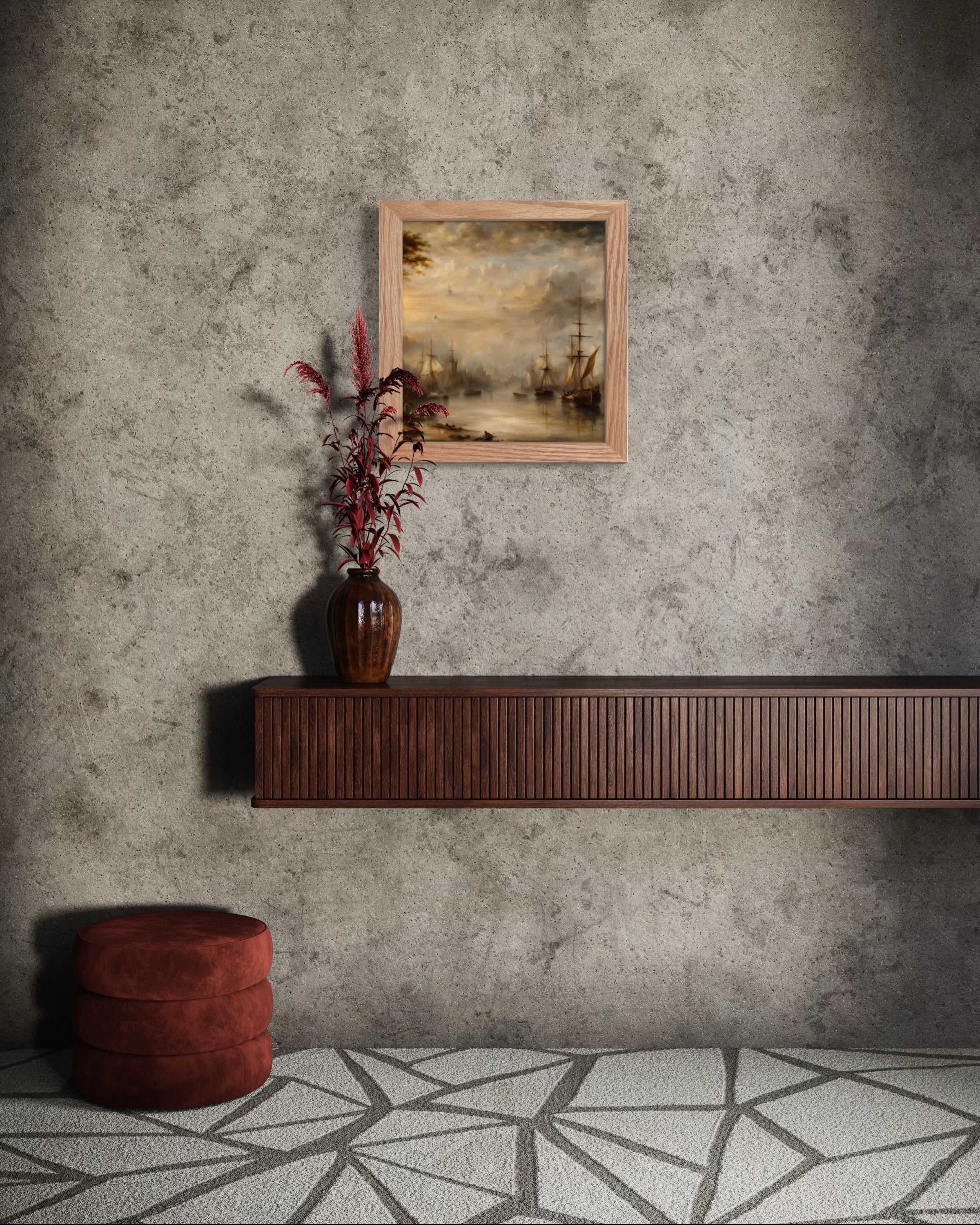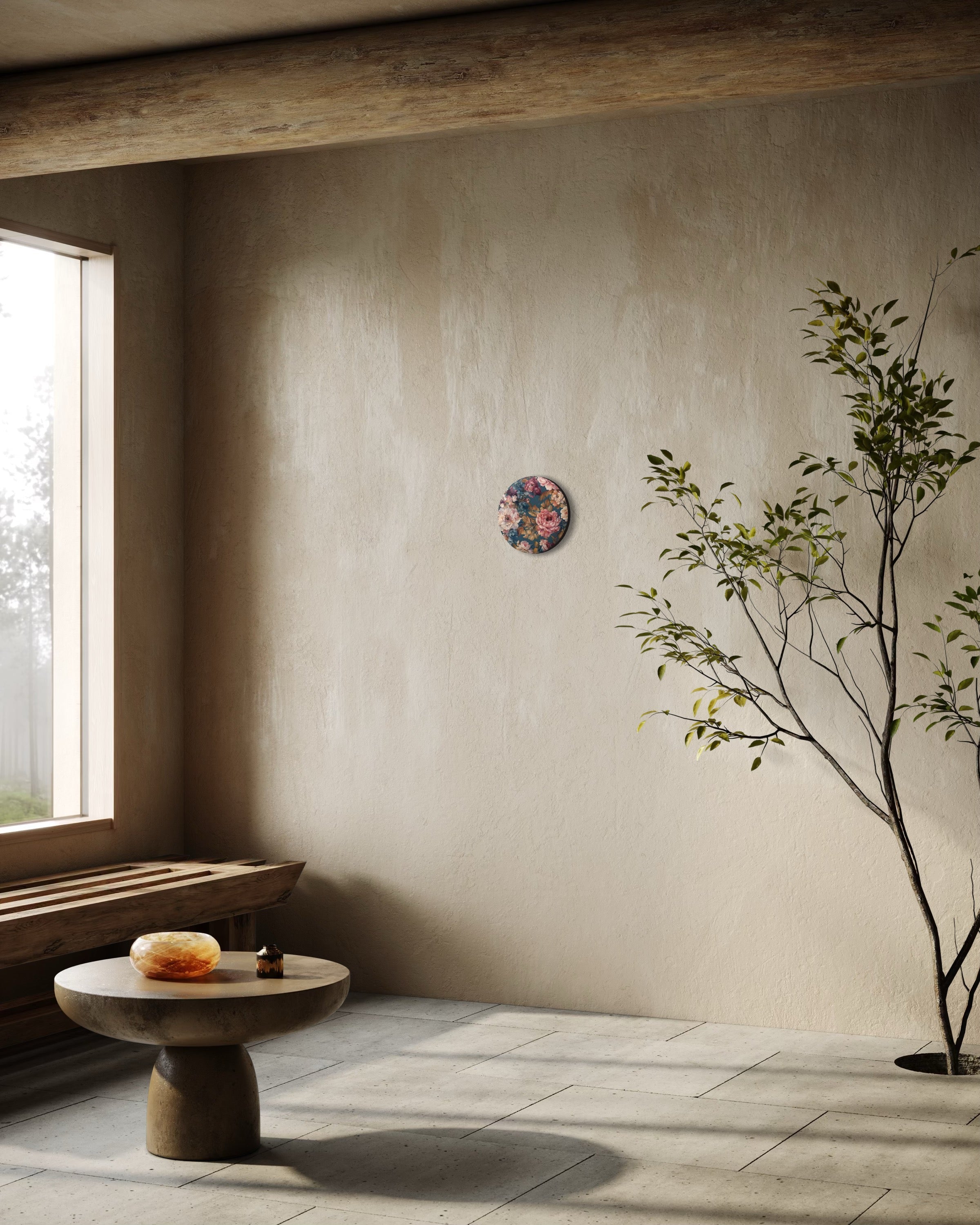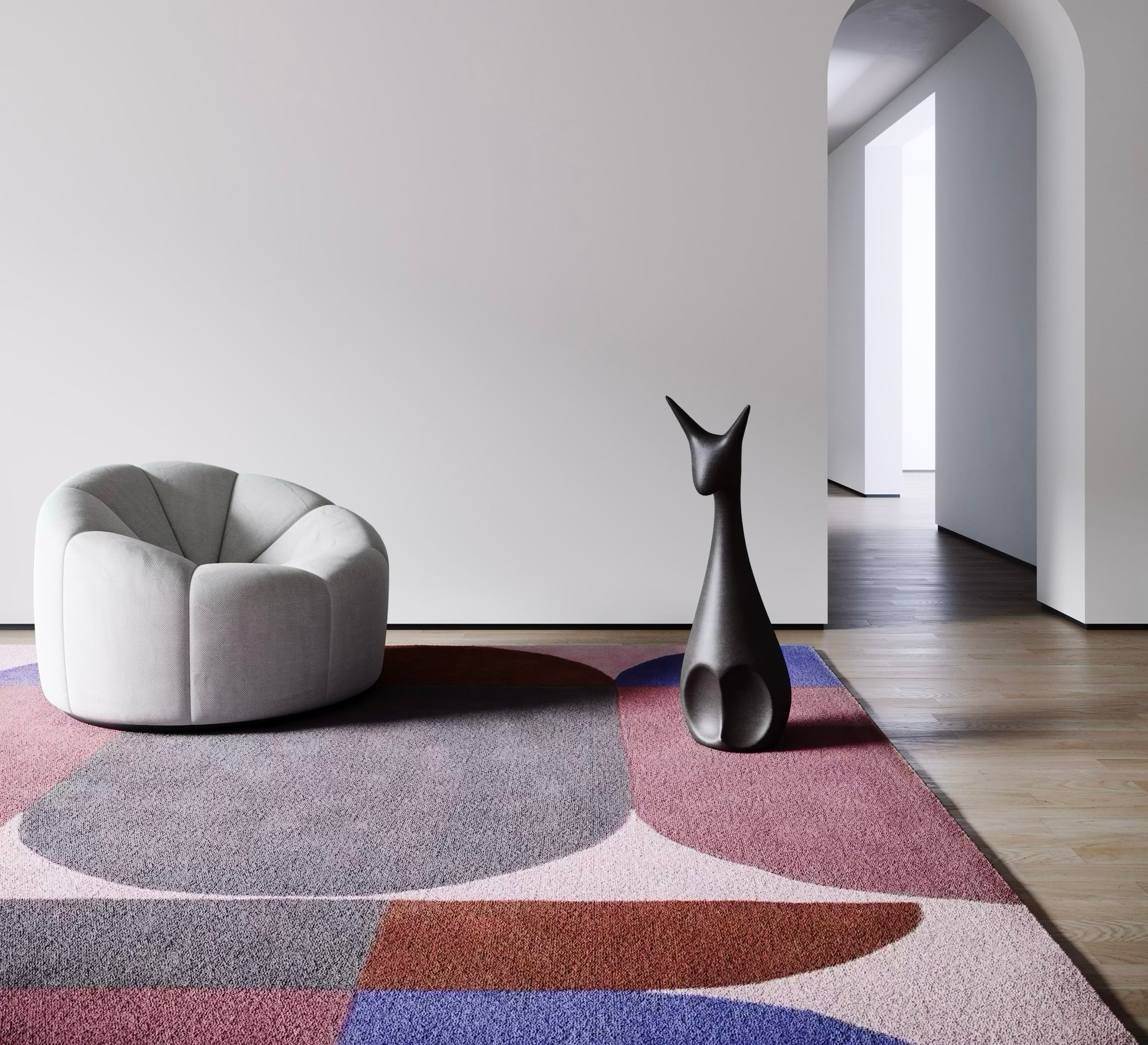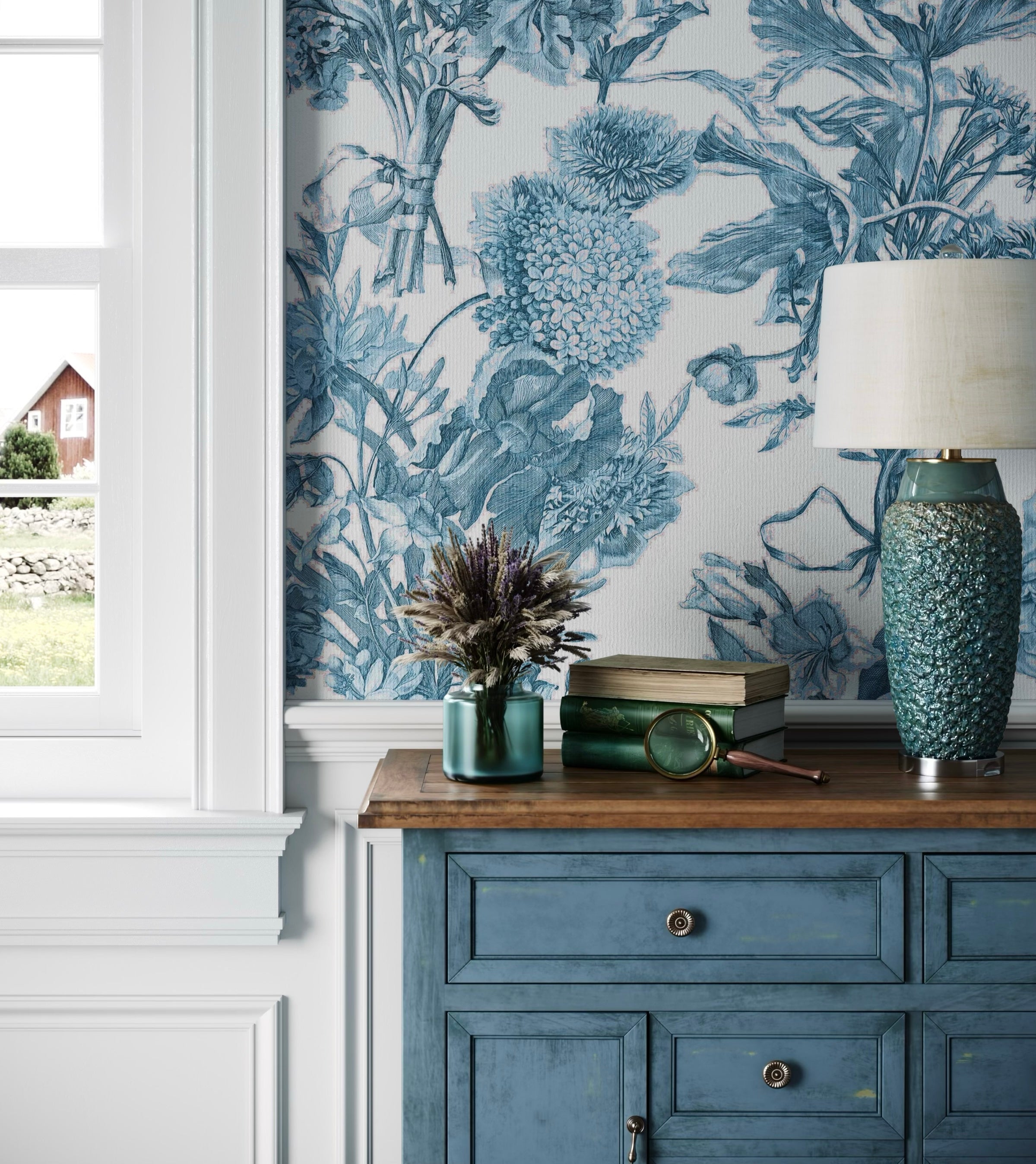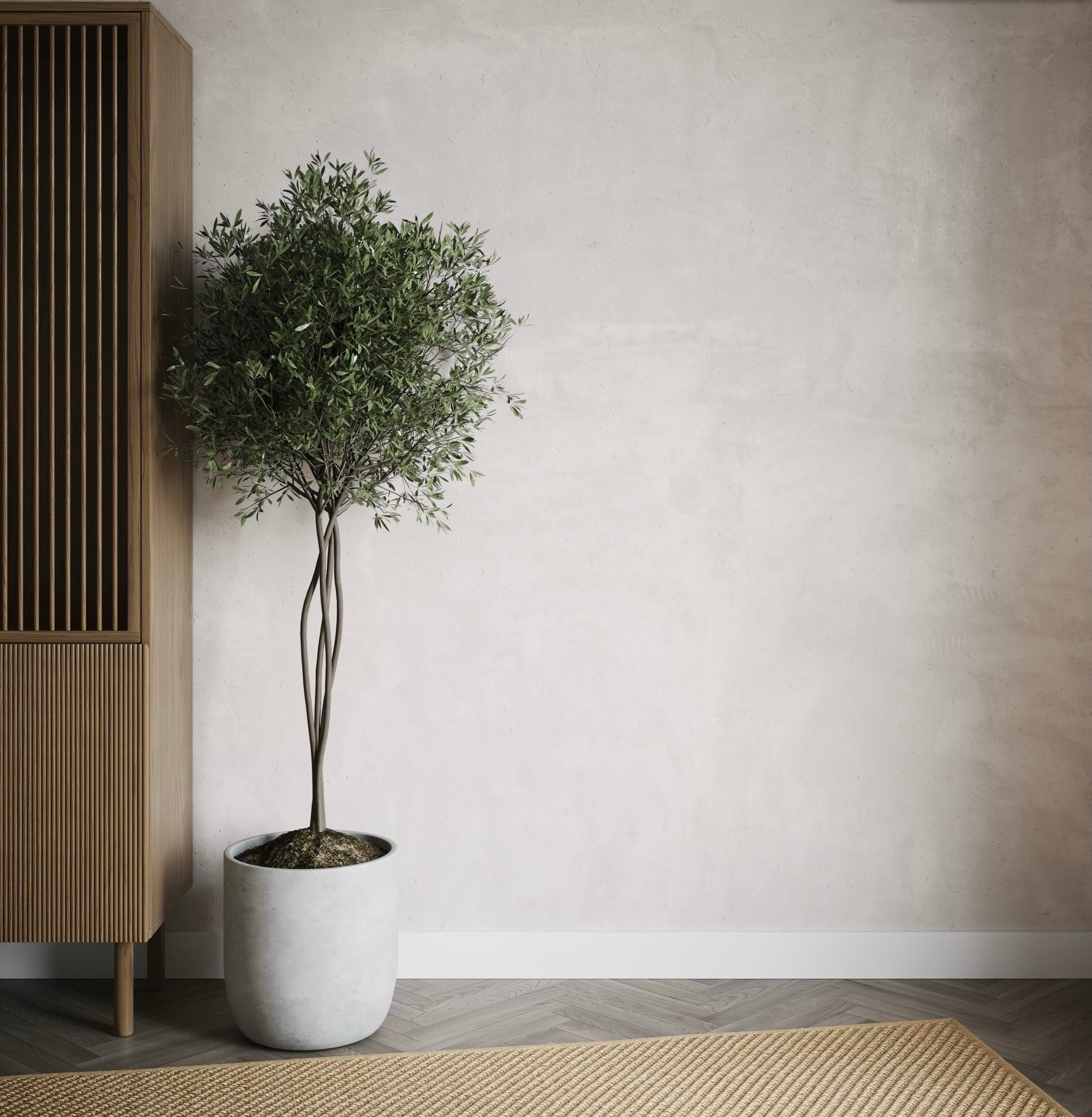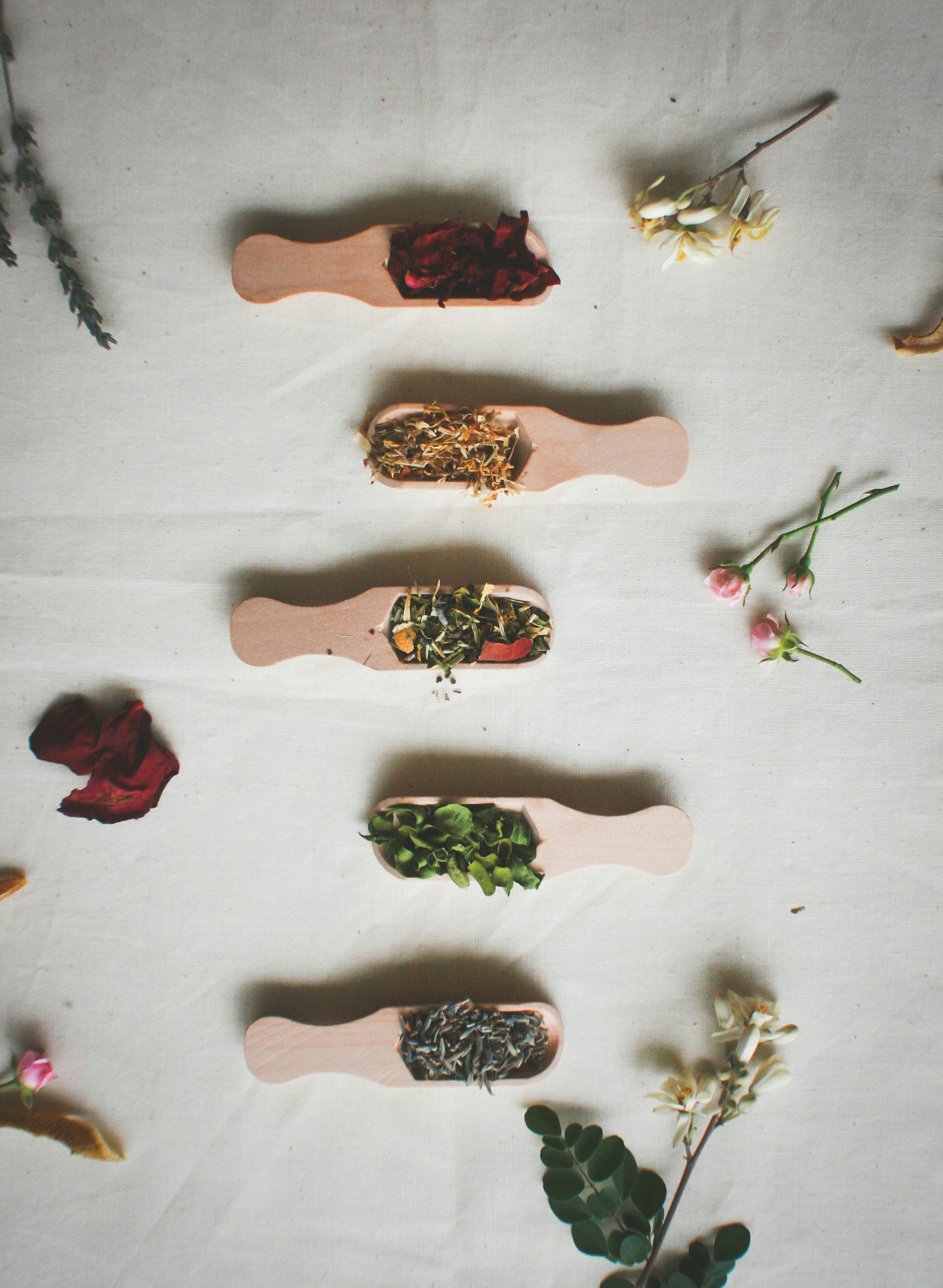
The Architecture of Scent: Understanding Fragrance Notes in Candles and Diffusers
In a small atelier in Grasse, the perfume capital of France, a master perfumer holds a strip of blotting paper, eyes closed, breathing slowly. "Bergamot," she says. "Calabrian, pressed this season. It will disappear in fifteen minutes, but for now it carries you to the citrus groves."
She is teaching the ancient art of reading scent the way one reads music: in layers, in time, in the spaces between notes. Every well-composed fragrance, whether worn as perfume or diffused through domestic space, follows the same architectural structure: top notes that greet you, heart notes that reveal character, and base notes that anchor the composition and linger long after the flame is extinguished.
To understand fragrance is to understand time made perceptible through scent. What we casually call "smell" is actually a carefully orchestrated performance, with each ingredient entering and exiting according to its molecular weight, its volatility, its relationship to the materials surrounding it. This is not merely chemistry, though chemistry it certainly is. It is an art form as sophisticated as any, and one that shapes domestic experience more profoundly than we typically acknowledge.
When we bring artisan candles into our homes, we are not simply adding pleasant fragrance. We are creating invisible architecture, shaping atmosphere, invoking memory, and transforming rooms into sanctuaries through the ancient language of scent.
The Physics of Perception: How Scent Moves Through Time
Before we can appreciate the artistry of fragrance composition, we must understand its physics. Scent molecules travel from source to nose through air, and their journey is determined by molecular structure. Smaller, lighter molecules move quickly and dissipate rapidly. Larger, heavier molecules move slowly and persist.
This simple fact governs everything. The lightest materials, typically those with molecular weights below 160 daltons, evaporate within minutes to an hour. These become top notes: the immediate impression, the first greeting, the invitation. Materials with moderate molecular weights (roughly 160 to 250 daltons) evaporate over several hours, forming the heart: the body, the character, the sustaining melody. The heaviest materials, often exceeding 250 daltons, can persist for days or even weeks. These are the base: the foundation, the memory, the lingering trace.
When you light a candle from our collection or activate a reed diffuser, you are not releasing a single unified scent but rather initiating a choreographed sequence. The top notes announce themselves immediately, creating first impression and setting expectations. Within twenty minutes to an hour, they begin to fade, and the heart notes emerge, revealing true character. After several hours, only the base notes remain, grounding the space in persistent warmth or depth or mystery, depending on materials chosen.
This temporal structure mirrors narrative: introduction, development, resolution. A well-composed fragrance tells a story that unfolds across hours, and understanding this architecture allows us to choose scents that serve not just aesthetic preferences but temporal patterns, daily rhythms, need for morning invigoration or evening calm.
Top Notes: The Luminous Invitation
Top notes are fleeting, ephemeral, the first breath that determines whether we lean in or turn away. In perfumery, they comprise roughly ten to fifteen per cent of a composition, yet they carry disproportionate importance. They are threshold, doorway, initial impression that colours everything following.
The vast majority of top notes come from citrus fruits and aromatic herbs, materials whose essential oils are dominated by light, volatile molecules. Let us consider the most significant by their geographical origins and the atmospheres they evoke.

Citrus: Mediterranean Light
Bergamot (Citrus bergamia), grown primarily in Calabria, Italy, offers scent simultaneously bright and slightly bitter, combining the freshness of orange with the complexity of herbs. Bergamot smells of Mediterranean mornings, of stone villages waking under warm sun. It lifts heaviness, clarifies atmosphere, and creates sense of optimism without cloying sweetness. The Earl Grey tea that graces British afternoon rituals owes its distinctive character to bergamot oil, though few who drink it realise they are tasting southern Italy.
Lemon from Sicily delivers clean, sharp clarity that stimulates alertness and brings sense of hygiene and order to space. The volatility of lemon means it dissipates quickly, usually within fifteen to twenty minutes, making it ideal for morning routines when immediate invigoration is wanted without lasting intensity.
Sweet orange carries warmth that other citruses lack. It smells of childhood, of holidays, of comfort without heaviness. Orange creates domestic welcome, the sense that a space is inhabited and cared for. Its sweetness makes it particularly suitable for blending with spices in autumn and winter compositions.
Yuzu, the Japanese citrus cultivated primarily in the cool highlands of Shikoku, offers complex brightness: part lemon, part grapefruit, part something entirely its own. Yuzu smells of winter in Japan, of hot baths infused with the fruit, of the moment when sharp cold meets enveloping warmth.
Aromatic Herbs: The Clarifying Green
Lavender (Lavandula angustifolia) from Provence remains the standard for quality. The scent is simultaneously herbal, slightly floral, faintly woody, and unmistakably calming. Lavender evokes Provençal fields in July, purple stretching to horizon under intense sun. Research by Rachel Herz at Brown University demonstrates that lavender demonstrably reduces cortisol levels and increases alpha wave activity in the brain associated with relaxation. It reduces anxiety, promotes sleep, and creates sanctuary—principles fundamental to biophilic design in the home.
Rosemary (Rosmarinus officinalis) from Mediterranean hillsides offers camphoraceous sharpness, herbal depth, and resinous quality that hints at incense. Rosemary stimulates mental clarity, aids concentration, and brings the outdoors inside. Studies at Northumbria University found that students in rosemary-scented rooms performed better on memory tests than control groups. It works beautifully in study and workspace settings, where its stimulating properties support focus without causing agitation.
Peppermint (Mentha piperita) delivers immediate cooling sensation through menthol. The scent is medicinal, bracing, uncompromising. Peppermint evokes alpine meadows, morning frost, the sharp intake of cold air. It clears sinuses, energises thought, and creates almost clinical sense of cleanliness.
Eucalyptus (Eucalyptus globulus) from Australian forests produces intensely camphoraceous, medicinal scent that opens airways and creates sense of expanded space. Aboriginal Australians have used eucalyptus medicinally for thousands of years; European colonists learned from this knowledge and brought eucalyptus oil into global commerce in the nineteenth century.
Neroli (Citrus aurantium), distilled from bitter orange blossoms primarily in Tunisia and Morocco, is one of perfumery's most precious materials. Its scent is simultaneously citrus and floral, fresh yet opulent, simple yet complex. Neroli evokes orange groves in bloom, North African gardens, the convergence of desert heat and irrigated abundance. It calms without sedating, uplifts without stimulating, and creates sense of luxurious wellbeing.
Heart Notes: The Soul Revealed
If top notes are greeting, heart notes are conversation: the substance, the disclosure, the reason you stay. They comprise the body of a composition, typically forty to sixty per cent of the blend, and they persist for two to four hours in most candles and diffusers.
Heart notes are where perfumers reveal their artistry, where individual style emerges, where a fragrance becomes memorable rather than merely pleasant. They are drawn from an enormous palette: flowers, spices, fruits, resins, leaves.
Floral Heart Notes: The Classic Centre
Rose (Rosa damascena, Rosa centifolia) from Bulgaria and Turkey yields what is often called the queen of essential oils. The scent is impossibly rich: sweet but not cloying, floral but not simple, opulent yet refined. Rose evokes Persian gardens, Moroccan palaces, English country estates, Victorian parlours. It is simultaneously ancient and eternal, never going out of fashion because it predates fashion itself.
The cultivation of roses for perfumery represents one of humanity's oldest agricultural practices. The ancient Persians perfected rose water distillation; Ottoman sultans commissioned rose gardens that covered valleys; Victorian England elevated the rose to symbol of empire. Our botanical-inspired textiles in the Sisu Tuin collection celebrate this enduring connection between flora and domestic beauty.
Jasmine (Jasminum grandiflorum) from India and Egypt remains among the most expensive materials in perfumery. The flowers must be picked at night when their scent is strongest, then immediately processed. The resulting absolute smells of tropical nights, of heat and bloom and slightly animal sensuality. Jasmine creates atmosphere of luxury, intimacy, and Eastern romance.
In Grasse, the traditional heart of European perfumery, jasmine was once cultivated on terraced hillsides. Each dawn, before the sun could diminish the flowers' volatile oils, pickers would harvest the delicate white blooms. Though most production has now moved to warmer climates, the technique remains unchanged: this is work that cannot be mechanised, that requires human hands and intimate knowledge of the plant's rhythms.
Ylang-ylang (Cananga odorata) from Madagascar, the Comoros, and the Philippines offers sweet, narcotic floralness with hints of banana and cream. The finest grades smell of tropical beaches, frangipani leis, warm nights in the Indian Ocean. Ylang-ylang creates sensuality, relaxation, and escape from northern climates into equatorial abundance.
Geranium (Pelargonium graveolens), despite its name, is not true geranium but rather scented pelargonium. Oil from Egypt and Reunion Island offers rose-like scent that is greener, more herbaceous, with hints of mint and lemon. Geranium evokes cottage gardens, Victorian glasshouses, English country rectories. It balances floral sweetness with herbal clarity, making it particularly useful in unisex compositions.
Spice Notes: The Warming Complexity
Cinnamon (Cinnamomum verum) from Sri Lanka offers sweet warmth and delicate complexity. The spice route that brought cinnamon from Southeast Asia to Europe shaped global history; wars were fought, empires built, fortunes made and lost over access to this single bark. Today, cinnamon evokes spice markets, winter holidays, kitchens in autumn. It creates immediate comfort, stimulates circulation both physical and psychological, and makes spaces feel inhabited and welcoming.
Cardamom (Elettaria cardamomum) from Guatemala and India offers sweet-spicy warmth with eucalyptus-like freshness. The scent is simultaneously comforting and exotic, familiar yet mysterious. Cardamom evokes chai, Indian sweets, Middle Eastern coffee ceremonies. It brings sophistication to spice blends, preventing them from becoming overly sweet or cloying.
Black pepper (Piper nigrum) from India and Madagascar is sharp, woody, warm, and slightly green. It stimulates without overwhelming, adds texture to compositions, prevents florals from becoming too sweet. Pepper evokes spice routes, colonial trade, the moment when East met West through commerce. It brings masculinity to blends without aggression.
Ginger (Zingiber officinale) from tropical Asia offers warm, spicy, slightly lemony character. Fresh and comforting simultaneously, ginger evokes Asian markets, tropical kitchens, the warmth of well-spiced food. Even when inhaled rather than consumed, ginger's volatile compounds can aid digestion and stimulate circulation, demonstrating how scent affects physiology beyond mere psychological association.
Green and Herbal Heart Notes: The Natural Bridge
Clary sage (Salvia sclarea) from France and Russia offers complex, slightly wine-like herbaceousness with hints of amber and tobacco. The scent is both fresh and warm, green and resinous. Clary sage evokes Provençal hillsides, herb gardens in late summer, the moment when green vegetation begins to dry and concentrate. It brings calm without heaviness, clarity without coldness.
Pine needle (Pinus sylvestris) from Northern Europe smells of forests, of Christmas trees, of winter walks in snow-covered woods. It is fresh yet resinous, cold yet warm, simple yet evocative. Pine creates atmosphere of natural sanctuary, bringing outdoor air inside. The practice of bringing evergreens indoors during winter predates Christianity; ancient peoples recognised that the scent of these trees, which remain green when all else dies, carries powerful symbolism of endurance and renewal.
Cypress (Cupressus sempervirens), those tall dark sentinels of Italian landscapes, yield oil that is green, woody, slightly resinous. The scent evokes Tuscan hillsides, formal gardens, the vertical emphasis that cypress brings to horizontal Mediterranean plains. In ancient cultures, cypress was associated with death and mourning, planted in cemeteries across the Mediterranean. Today, its scent carries this gravitas: serious, contemplative, connecting us to traditions measured in millennia.
Base Notes: The Foundation and Memory
Base notes are memory, persistence, the trace that remains after everything else has faded. They comprise twenty-five to thirty-five per cent of most compositions and can linger for days or even weeks after a candle is extinguished.
These are the materials that give a fragrance its soul, its depth, its capacity to haunt. They come primarily from woods, resins, and roots. Let us explore the most significant.
Woods: The Structural Foundation
Sandalwood (Santalum album, Santalum spicatum) offers creamy, smooth, woody-sweet scent that is simultaneously warm and meditative. Indian sandalwood was for centuries the gold standard, but over-harvesting has made it prohibitively rare and expensive. Australian sandalwood now dominates the market. Both evoke temples, incense ceremonies, the stillness of sacred spaces.
Sandalwood's use in spiritual practice spans continents and millennia. Hindu and Buddhist temples burn sandalwood incense; Islamic traditions value it for prayer beads; Chinese medicine employs it for calming properties. This convergence across cultures suggests something deeper than mere preference: sandalwood appears to speak to universal human need for contemplative calm. In candles and diffusers, sandalwood provides the base that supports florals, spices, and citruses, preventing them from floating away without anchor.
Cedarwood (Cedrus atlantica, Juniperus virginiana) from Morocco is warm, slightly sweet, unmistakably woody. The scent evokes forests, wooden architecture, the smell of sawmills and workshops. Cedar brings strength, stability, and slight melancholy to compositions. The biblical cedars of Lebanon, felled nearly to extinction for shipbuilding and temple construction, remind us that even the mightiest trees fall to human need. Today's cedarwood comes from more sustainable sources, but the scent still carries that ancient weight.
Vetiver (Vetiveria zizanioides), distilled from the roots of a tropical grass grown primarily in Haiti, Java, and Reunion, offers one of perfumery's most distinctive base notes. The scent is earthy, rooty, slightly smoky, with hints of moss and leather. Vetiver evokes tropical rain on earth, root cellars, the dampness of forests after storms. It grounds florals, deepens citruses, and creates masculine sophistication. Different origins produce notably different characters: Haitian is smokiest, Javanese is woodiest, Reunion is most refined.
Patchouli (Pogostemon cablin) from Indonesia offers earthy, slightly sweet scent that is unmistakably hippie if used carelessly but sophisticated when handled well. The scent evokes damp earth, fallen leaves, forest floors, mushroom cellars. Patchouli improves with age—one of very few essential oils that does—becoming smoother and less camphoraceous. In the nineteenth century, patchouli leaves were packed with fine Indian shawls to protect them from moths during the long sea journey to Europe. The scent became so associated with authentic Indian textiles that European manufacturers began scenting their inferior copies with patchouli oil to suggest Oriental authenticity. Much like the heritage textiles in our Sisu Loom collection, patchouli carries stories of trade routes and cultural exchange.
Resins: The Ancient Anchor
Frankincense (Boswellia species), harvested from trees in Somalia, Oman, and Yemen, has been burned in religious ceremonies for millennia. The essential oil offers citrusy-woody-spicy warmth with slight bitterness. Frankincense evokes churches, mosques, temples, ancient trade, the original luxury commodity.
The frankincense trade shaped ancient civilisation. The incense route from southern Arabia to the Mediterranean brought not just resin but ideas, religions, technologies. The Biblical Magi brought frankincense to the infant Jesus; Egyptian priests burned it in temples; Roman emperors commissioned it for state ceremonies. This is a scent with five thousand years of human history embedded in its molecules. In contemporary home fragrance, frankincense creates contemplative atmosphere, spiritual without being sectarian, and brings gravitas to any composition.
Myrrh (Commiphora myrrha), companion to frankincense in ancient trade and religion, yields oil that is deeper, darker, slightly bitter and medicinal. The scent is woody-spicy-balsamic with hints of leather and earth. Myrrh evokes desert spirituality, ancient medicine, the practice of preservation. Ancient Egyptians used myrrh in embalming; Greek soldiers carried myrrh tincture for wounds; medieval physicians prescribed it for everything from toothache to plague. Modern research has validated some traditional uses: myrrh does possess genuine antimicrobial properties.
Benzoin (Styrax tonkinensis) from Laos and Thailand offers sweet, vanilla-like, balsamic warmth. The scent evokes vanilla but with deeper, more resinous character. Benzoin creates comfort, warmth, the smell of something preserved and cared for. It works beautifully in autumn and winter compositions, adding sweet depth without the obviousness of vanilla.
Labdanum (Cistus ladaniferus), harvested from rockrose bushes around the Mediterranean, offers amber-like warmth with aspects of leather, honey, and herbs. The ancient world used labdanum extensively. The resin was collected in a peculiarly intimate way: shepherds would comb their goats' beards, where the sticky resin accumulated as the animals browsed rockrose bushes. This same material that ancient Minoans burned in their palaces now anchors the amber accords in contemporary perfumery. Labdanum brings warmth without sweetness, connecting us to the very earliest human experiments with fragrance.
The Cultural Geography of Scent
Every place on earth has a scent signature determined by its climate, vegetation, geology, and cultural practices. Understanding these signatures allows us to create compositions that transport, that evoke specific atmospheres and memories, that bring the world into our homes.
Mediterranean Summer
Hot stone, dry earth, citrus groves, herb hillsides, salt air, ancient cypresses standing sentinel over landscapes unchanged since Roman times. This is the scent of civilisations built on olive oil and wine, of afternoons suspended in heat, of evenings when temperature finally breaks and lemon verbena releases its sweetness into cooling air.
Materials: Bergamot, rosemary, cypress, fig accord, labdanum, the marine quality of oakmoss
This composition might begin with bergamot's bright citrus, transition through rosemary and cypress evoking hillside garrigue, and settle into labdanum's warm amber foundation. It is the scent of long summers, of archaeological sites where thyme grows between fallen columns, of the moment when sea breeze reaches inland villages at dusk.
Japanese Garden
Clean stone, water over rock, moss in shade, hinoki wood, the faint trace of incense from distant temples, cherry blossoms in spring giving way to maple in autumn. This is the scent of wabi-sabi—beauty in imperfection and transience—and of ma, the concept of meaningful space between things.
Materials: Yuzu, green tea accord (synthetic but evocative), Japanese cypress, iris root (for its powdery restraint), sandalwood, frankincense
The Japanese approach to scent is fundamentally different from European traditions. Where Western perfumery often emphasises abundance and opulence, Japanese incense culture values subtlety, restraint, the scent that is barely there yet unmistakable. The kōdō tradition—literally "way of incense"—treats scent appreciation as spiritual practice, requiring the same discipline and aesthetic philosophy as tea ceremony or calligraphy.
English Cottage
Rose gardens in June, lavender hedges in July, old wood that has absorbed centuries of beeswax polish, the faint must of old books, tea in bone china, the particular smell of rain on stone paths. This is the scent of a culture that turned gardening into art form, that elevated domesticity into aesthetic system.
Materials: Rose, lavender, honey absolute, cedarwood (for old furniture), bergamot (for Earl Grey associations)
The English cottage garden, which appears so natural and unplanned, is actually carefully choreographed to provide blooming beauty from early spring through late autumn. This succession of flowers creates succession of scents: snowdrops and crocuses in February, daffodils in March, bluebells in May, roses and lavender through summer, chrysanthemums into autumn. A well-composed fragrance inspired by this tradition should feel simultaneously cultivated and wild, intentional and relaxed.
Arabian Palace
Rose water cooling the air, oud burning in silver censers, frankincense and myrrh from the ancient trade, saffron and cardamom from the spice markets, carpets that have absorbed decades of incense. This is the scent of cultures that made fragrance central to hospitality, spirituality, and daily life.
Materials: Rose absolute, oud, frankincense, myrrh, saffron (expensive but extraordinary in tiny amounts), amber accord
Middle Eastern fragrance culture operates at intensities that can overwhelm Western noses accustomed to more restrained compositions. In traditional Arabian hospitality, guests are offered not just coffee and dates but also incense to perfume their clothing, rose water to cool their hands and faces, and sometimes pure oud oil applied directly to skin. Fragrance is not decorative but essential, not luxury but generosity made tangible.

The Neuroscience of Scent and Memory
Understanding fragrance composition would be incomplete without addressing why scent affects us so profoundly. Of all our senses, smell is unique in its direct connection to memory and emotion.
When scent molecules enter the nose, they bind to olfactory receptors that send signals directly to the olfactory bulb, which connects immediately to the limbic system: the brain's emotional centre. This pathway bypasses the thalamus (the sensory relay station), meaning scent reaches emotional processing centres before it reaches conscious thought.
This explains why a particular smell can trigger immediate, powerful emotional responses before you've even identified what you're smelling. The scent of your grandmother's kitchen transports you to childhood instantly, viscerally, without intellectual mediation. This is not metaphor; it is neurology.
Research by Rachel Herz demonstrates that scent-evoked memories are more emotional, more evocative, and felt more intensely than memories triggered by other senses. This phenomenon, known as "Proustian memory" after Marcel Proust's famous madeleine passage in In Search of Lost Time, has profound implications for home fragrance. The scents we choose for our domestic spaces become woven into our daily memories. Years later, encountering the same scent can transport us back to this moment, this home, this period of life.
Beyond memory, specific scent molecules trigger measurable physiological responses. Studies at Wesleyan University showed that participants sleeping in rooms scented with lavender experienced deeper slow-wave sleep and reported feeling more refreshed upon waking. Japanese research on shinrin-yoku (forest bathing) found that citrus terpenes lower blood pressure and reduce anxiety. Peppermint increases oxygen saturation in the blood and improves athletic endurance.
These are not placebo effects but documented biological responses. When we bring certain scents into our homes, we are not simply making rooms smell pleasant. We are actively modifying our neurochemistry, our stress responses, our cognitive function. This is why thoughtful fragrance selection matters beyond mere aesthetics.
Practical Wisdom: Creating Your Scent Practice
Armed with understanding of notes, composition, and materials, we can now approach creating a scent practice for the home: a considered approach to fragrance that serves different needs, moods, and times.
The Essential Scent Wardrobe
Just as you would not wear the same clothing for every occasion, your home benefits from multiple fragrances suited to different needs. Consider building a "scent wardrobe"—four to six compositions covering everyday requirements.
The Morning Awakener: Energising, clarifying, helps transition from sleep to activity. Best notes are citrus (lemon, grapefruit), mint, rosemary. Use in bathroom or kitchen for 30 minutes whilst preparing for the day.
The Focus Enhancer: Supports concentration and productive work. Rosemary, basil, pine, cedar, light citrus. Ideal for study or home office as reed diffuser for constant gentle presence.
The Comfort Creator: Warmth and relaxation for autumn and winter. Vanilla, spices, amber, honey, woods. Perfect for living room spaces as candle for ritual and visual warmth.
The Sleep Supporter: Calms mind and promotes restful sleep. Lavender, vetiver, sandalwood, neroli. Use in bedroom 30-60 minutes before sleep, then extinguish.
Candles Versus Diffusers: Choosing Wisely
The same composition will perform differently in candles versus reed diffusers. Understanding these differences helps you choose the right format for your needs.
Candles release fragrance through heat. They create ritual and atmosphere through flame, provide light as well as scent, and generally offer stronger scent throw than cold diffusion. Oriental, woody, and spice-heavy compositions excel in candle format, where heat amplifies their depth. Natural waxes—soy, beeswax, coconut—burn cleaner than petroleum-derived paraffin and align with biophilic principles of bringing natural materials into the home.
Reed diffusers release fragrance through passive evaporation, offering constant, consistent scent without intervention. They work beautifully for delicate compositions where heat might damage nuances. Citrus-herbal-woody compositions and floral-green-woody blends maintain interest even as top notes fade. The gentleness of reed diffusers makes them ideal for workspace environments where you want subtle presence without distraction.
Sustainability and Ethics in Fragrance
The fragrance industry faces significant sustainability challenges. Many precious materials are harvested from wild populations in developing countries, often with insufficient regard for environmental impact or fair compensation for harvesters.
Sandalwood has been so over-harvested that Indian sandalwood (Santalum album) is now endangered. Agarwood faces similar pressures. Frankincense and myrrh are increasingly threatened by over-tapping and climate change; trees are being tapped too frequently and too deeply, killing them and reducing regeneration.
When selecting candles and diffusers, look for organic certification, Fair Trade sources, and companies that can tell you exactly where materials come from. Choose cultivated over wild-harvested for threatened species. Support transparency. Consider that well-made synthetic alternatives for rare materials can be more sustainable than natural extraction whilst still providing beautiful scent.
Our commitment at Sisuverse includes working only with suppliers who can document ethical sourcing and sustainable practices. Beauty should never come at the cost of environmental degradation or exploitation.
The Art of Restraint: When Not to Scent
As much as we celebrate home fragrance, there are times when restraint is wiser. During illness, strong scents can worsen nausea and headaches. When hosting guests with sensitivities, remember that approximately 30% of people experience adverse reactions to fragrances. During meals, heavy fragrance competes with food aromas. In nurseries and young children's rooms, keep scents minimal and natural. When you need a break, regular scent-free days reset your palate and renew appreciation.
Constant scenting leads to adaptation and diminished enjoyment. The most sophisticated approach to home fragrance is not to scent every room always, but to use fragrance intentionally: for specific moods, particular times, certain needs. This preserves specialness and prevents the phenomenon of "nose blindness," where we stop perceiving scents we are constantly exposed to.
Building Your Olfactory Literacy
Learning to appreciate fragrance requires training your nose to identify individual notes and understand how they interact. Begin simply, with single essential oils. Purchase small bottles of five materials: one citrus (bergamot or lemon), one herb (lavender or rosemary), one flower (rose or jasmine), one spice (cinnamon or cardamom), one wood (cedarwood or sandalwood).
Smell each one separately, on a blotter strip or cotton pad. Close your eyes. Notice not just whether you like it but what it evokes: memories, places, seasons, emotions. Write notes. This builds your scent vocabulary and trains your olfactory memory.
Once you can identify single notes, begin experiencing them in pairs. What happens when you smell bergamot and lavender together? Do they enhance each other, creating something greater than either alone? Or do they compete, each diminishing the other?
This practice transforms you from passive consumer to active appreciator. You begin to understand why certain compositions work and others fall flat, why some scents fatigue your nose quickly whilst others sustain interest for hours. Much like learning to appreciate the artistry in handwoven textiles, developing olfactory sophistication deepens pleasure and transforms consumption into genuine appreciation.
Scent as Sanctuary
We began this exploration understanding that fragrance follows architectural principles: top notes greet, heart notes reveal, base notes remain in memory. We have journeyed through the cultural geography of scent, from Mediterranean hillsides to Japanese gardens, from English cottage roses to Arabian incense. We have examined the neuroscience of why scent affects us so profoundly and the practical considerations of candles versus diffusers, ethics versus aesthetics.
But beyond all technical knowledge is something simpler and more profound: the recognition that the scent in your home matters. It shapes mood, triggers memory, affects physiology, creates atmosphere, and ultimately defines the invisible architecture of your daily life.
When we bring thoughtfully composed fragrance into our homes, we are practising a form of biophilic design that goes beyond visual connection to nature. We are literally bringing botanical essences—the volatile oils of plants, the resins of trees, the distilled essence of flowers—into our domestic spaces. These materials carry with them the places where they grew, the hands that harvested them, the traditions that learned to extract their beauty.
A home filled with thoughtful scent becomes more than shelter. It becomes sanctuary, memory palace, refuge from the sensory chaos of modern urban life. Each room's fragrance creates its own atmosphere, supports its own activities, evokes its own emotional landscape. Together, they form a cohesive olfactory environment that is as considered and intentional as the furniture, art, and textiles you choose.
You now have the tools to be intentional about this architecture. You understand that bergamot evokes Mediterranean mornings, that vetiver grounds and stabilises, that frankincense creates contemplative space, that vanilla brings universal comfort. You know that top notes greet, heart notes reveal, and base notes linger in memory long after the flame dies.
Use this knowledge gently. Start with simple compositions: three notes, balanced proportions, quality materials. Build your wardrobe thoughtfully. Create scent signatures that make your house distinctly yours. And remember: you are not just making rooms smell pleasant. You are crafting the olfactory backdrop against which your life unfolds, creating invisible architecture that shapes experience as surely as walls and windows do.
The question is no longer whether to scent your home, but rather: what story will your home tell through scent? What atmospheres will you create, what memories will you anchor, what daily rituals will become inseparable from particular fragrances? This is the true power of fragrance: not to decorate space, but to create it. Not to fill time, but to make it memorable. Not to add luxury to life, but to make life itself feel considered, intentional, deeply lived.

Photography Credits:
Image 1: Coco Tafoya via Unsplash
Image 2: Chelsea Shapouri via Unsplash
Image 3: Elijah Pilchard via Unsplash
Image 4: Carmen Grobler via Unsplash
Further Study
For those wishing to explore the architecture of scent more deeply:
Foundational Texts:
- Aftel, Mandy. Fragrant: The Secret Life of Scent (Riverhead Books, 2014): Accessible introduction to natural perfumery and botanical ingredients
- Turin, Luca and Tania Sanchez. Perfumes: The A-Z Guide (Penguin, 2009): Comprehensive reviews of commercial fragrances with technical insights
- Ellena, Jean-Claude. The Diary of a Nose: A Year in the Life of a Parfumeur (Particular Books, 2012): Intimate account from master perfumer at Hermès
Scientific Perspectives:
- Herz, Rachel. The Scent of Desire: Discovering Our Enigmatic Sense of Smell (William Morrow, 2007): Neuroscience of olfaction and its effects on behaviour
- Gilbert, Avery. What the Nose Knows: The Science of Scent in Everyday Life (Crown, 2008): Accessible science writing on smell and perception
Cultural and Historical:
- Classen, Constance, David Howes, and Anthony Synnott. Aroma: The Cultural History of Smell (Routledge, 1994): Anthropological perspectives on scent across cultures
- Reinarz, Jonathan. Past Scents: Historical Perspectives on Smell (University of Illinois Press, 2014): Social history of odour
Botanical and Material Sources:
- Mojay, Gabriel. Aromatherapy for Healing the Spirit (Healing Arts Press, 1999): Detailed profiles of essential oils with therapeutic properties
- Kew Royal Botanic Gardens: Comprehensive botanical information on plants used in perfumery
Perfume Museums and Resources:
- International Perfume Museum, Grasse, France: The historical heart of European perfumery
- Osmothèque, Versailles, France: Archive of historical fragrances
- The Perfume Society: UK-based education and appreciation
At Sisuverse, we honour the ancient art of scent through carefully curated candles and home fragrances that bring natural botanical beauty into contemporary homes. Explore our collections and discover how thoughtful fragrance transforms domestic space into sanctuary.
